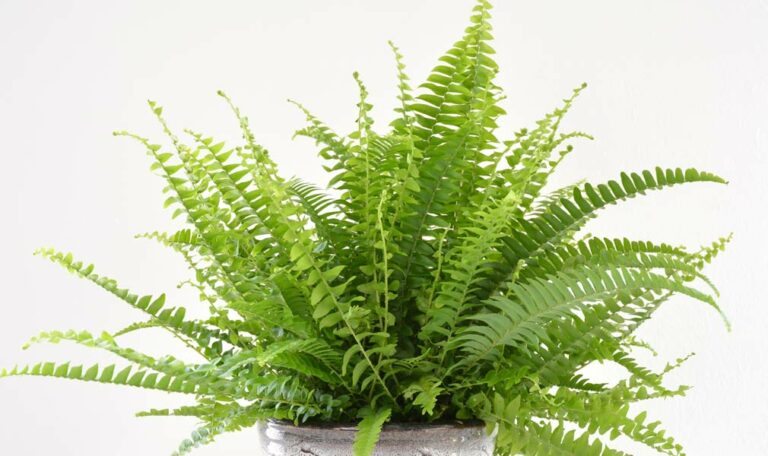Boston fern (Nephrolepis exaltata) is a very popular plant that is native to America, Africa and Polynesia. It a relatively low-maintenance plant that brings the swampy vibe with its blue-green foliage to many of our homes. It does not really require lots of sunlight, thus it can be placed almost anywhere indoors.
Other popular Fern plant varieties:
- Giant Fern
- Southern Maidenhair Fern
- Hart’s-tongue Fern
- Lady Fern
- Japanese Painted Fern
Care
As mentioned above, the Boston Fern plant is pretty low-maintenance and should not be problematic for beginner gardeners to care for. However, consistency is key when it comes to this plant, so pay attention to these key aspects:
- Soil: Boston Fern plants like well-draining, acidic (6.0 – 6.5 pH) soil that is rich in organic nutrients. We recommend using a peat-based potting mix or compost for planting.
- Water: Keeping the soil just slightly moist is the key to keeping your Boston Fern plant happy. Never let it sit in soggy soil, otherwise, root rot can be an issue. Water them daily (or twice a day on hot days).
- Light: Filtered sunlight is preferred by these plants, so do not put them in the brightest spot indoors (or outdoors).
- Temperature: The ideal temperature for a Boston Fern plant is between 65 and 75 F. Keep in mind that they do not handle extreme cold or heat very well.
Propagation
Other than using seeds, you can easily propagate Boston fern plants by division even if this is your first time doing so. Just get a sharp garden scissor, separate a section of your plant with healthy roots, put it in a pot with potting soil, and start watering. If you keep the soil slightly moist, you should have a nicely propagated Boston fern in a few weeks.
Common Pests
- caterpillars
- mealybugs
- false spider mites
- scales
- thrips
Frequently Asked Questions
Thankfully, the Boston fern plant is non-toxic to pets.
How did Boston fern get it’s name?
The Boston fern plant got its name in Massachusets in 1894. A local distributor started propagating these beautiful plants and that’s where the name comes from.
How does Boston fern help your home environment?
The Boston fern plant is probably one of the best air-purifying houseplants. It not only gets rid of indoor toxins but can also help with dry noses and throats because it restores moisture to dry air.
How often to water the Boston fern plant?
Daily watering is pretty safe for these plants, but if you keep it outside and the temperatures get really high, increase the number of waterings to two per day.


